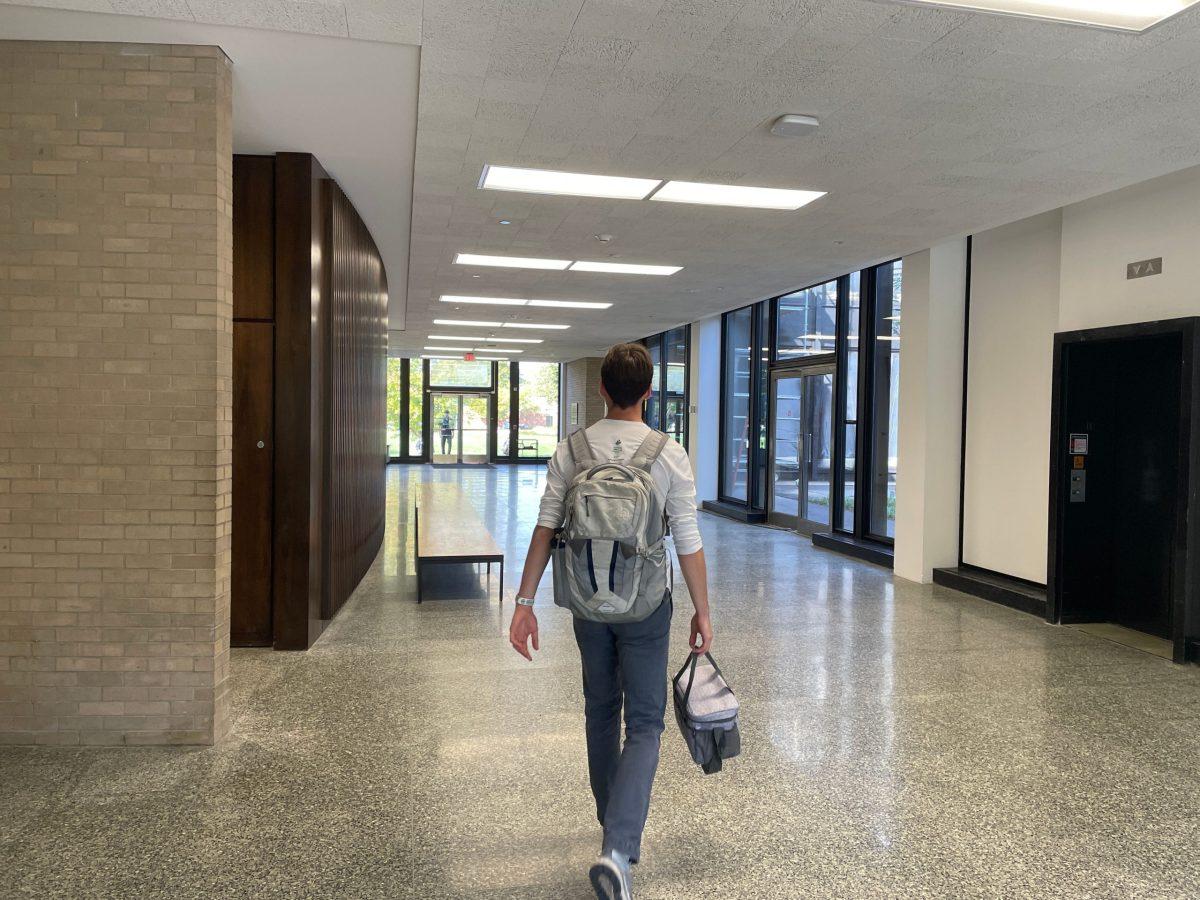College enrollment rates are falling across the nation. This is a relatively recent development in the world of education with numbers starting to trend downwards in 2010. As the enrollment deficit has continued to widen in the years following, admissions offices are targeting a new demographic: men.
Since the introduction of Title IX in the early 1980s, the gap between women and men enrolled in college has corrected itself — and has now fallen into overcorrection. University Business reports that 60% of undergraduate students in the United States are women and projects that the disparity will only continue to worsen.
“I wouldn’t say that Drake is ‘affected,’ but I would acknowledge that we are reflecting the national trend that has been going on for over 40 years,” said Joel Johnson, dean of admission at Drake University.
Current enrollment statistics at Drake show a student body that is 38% male, which is in line with the approximate 60-to-40 national average.
According to the Census Bureau, men make up 51% of college-aged people in the U.S..
Despite best efforts by two-year and four-year institutions, more and more men have chosen not to go to college in recent years, citing a variety of socioeconomic factors. This decision is being reflected in places like trade schools, where, according to the Hechinger Report, enrollment has seen an 11.5% increase between spring 2021 and spring 2022. Construction schools have seen an even bigger increase, with enrollment rising 19.3% in the same time frame.
One reason for the newfound popularity in the trade fields stems from the fact that men have a higher wage premium at age18 than women. Many men are choosing the shorter path to the workforce over the lengthier, costlier route that comes along with a college education.
Another important factor behind the falling enrollment numbers comes in the lack of mental health resources at universities in the U.S. Nearly half of male college students considered dropping out of school in 2022, citing mental health as the root of their dilemma.
“We are not going to reverse a national trend by ourselves,” Johnson said. “However, we can remain diligent and attentive to the young men on our campus as well as those that are traditionally attracted to Drake and ensure we are supporting them and enhancing their sense of belonging.”
While lowered enrollment is undeniably impacting admissions offices across the country, other campus organizations are feeling the impact as well. Lower enrollment means lower student engagement, and some student leaders are struggling to keep their organizations up and running.
Fraternity life is often the first thing that comes to mind when thinking about male engagement on college campuses. While fall recruitment polled better than previous years at Drake, fraternity leaders said it didn’t happen without hard work.
“It’s about who wants it,” said Cody Butenhoff, president of the Interfraternity Council at Drake. “We’re very happy with the spread of things.”
Good numbers aside, recruitment is still struggling. Charlie Galloway, vice president of recruitment for the Interfraternity Council, attributed the high registration this year to increased recruitment efforts.
“We have to get desperate in order to recruit,” Galloway said.
According to Galloway, many potential new members had no idea that Drake offered fraternity and sorority life before stepping foot on campus. This means that recruitment tactics fell to the fraternities themselves, something he said is putting strain on the chapters.
“We decided to get rid of Spring Recruitment…because the interest in it was so low…we had less than 15-20 people sign up in the past two years. It was a waste of money and effort for the chapters to put so much work into it to have such a low turnout,” Galloway said.
Additionally, Galloway noted that continued lower interest levels could result in the end of smaller fraternity chapters at Drake.
As student organizations fight to keep up with falling male enrollment, admissions offices are fighting too. Colleges have historically been male-dominated spaces, but as the gender gap widens and this conception becomes increasingly less true, universities are actively working to re-balance enrollment.
“This is not a Drake problem, it’s a higher education problem,” Johnson said. “What we can continue exploring as a university is expanding programs and organizations that historically may be attractive to young men looking at college.”








